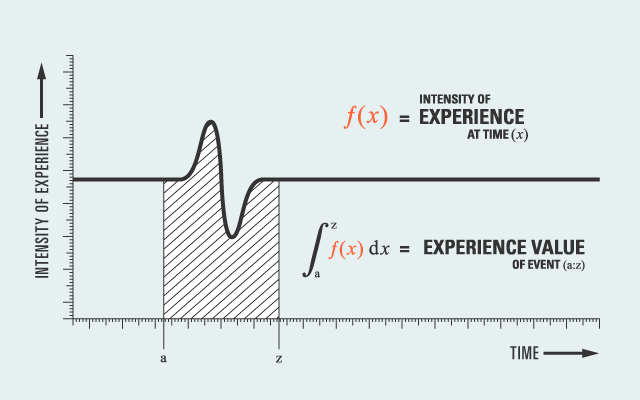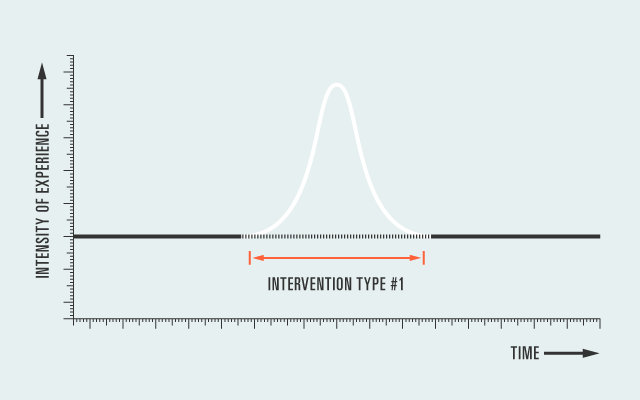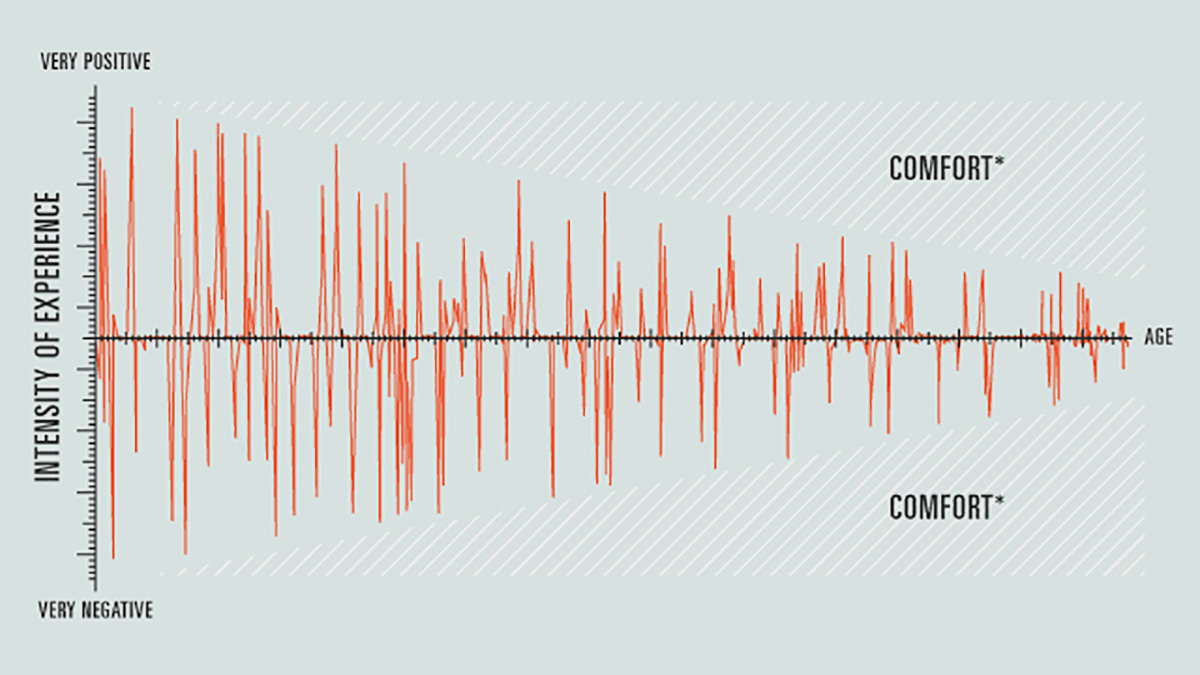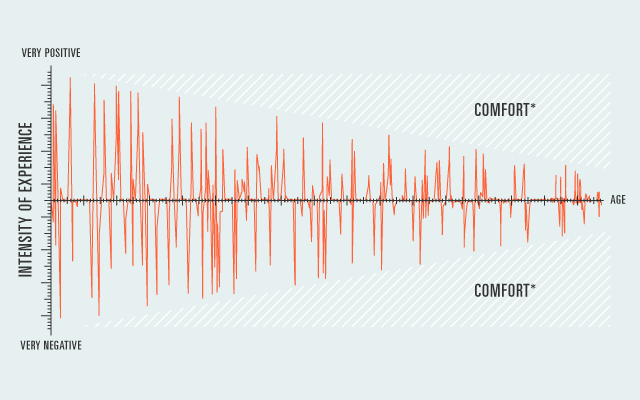Define Intervention

Sam Hill
30th January 2012
Experiential interventions (systems designed to improve the quality of experience for an individual) can essentially be split into two groups. One is an event – something that occupies a specific period in time and most likely a particular place, or context. The other is a passive effect and can change an individual’s perception of their circumstances, and thus the actions they commit.
Experience Value
The below graph is an illustration of ‘Experience Value’, a concept we often use to explain the benefit of applying experience-design thinking. Experience Value is what an individual retains from ‘events’ (moments of time), in the form of memory; a mental record of how they felt, both emotionally and sensationally, as well as the knowledge they acquired. The more intense the experience, and the longer the period over which it is sustained, the more experience value that is accrued and the stronger the memories that will be retained.
Experience value is essentially an intangible commodity that represents richness of life. By visualising it graphically we can explain how to generate experiences through a design process.
Intervention Type #1 – time and context dependant
The first way to enrich someone’s life is to create an event with a beginning, middle and end. This event will typically be a break from normal routine. It could last an indefinite amount of time – seconds or years – but it is probably not sustainable as a constant way of being. Many formats for this kind of experiential interaction will already be familiar to most people – watching a film, a day at a theme park, playing football, eating a chilli pepper, going on a cruise, being surprised by a car back-firing etc. These events can be something that is paid for, but this isn’t necessarily always the case. They can be planned or accidental; man-made or natural.
Intervention Type #2 – perception augmentation
The second type of intervention is a change to what already exists. It affects daily life. It is applying a lens, or filter, in order to enhance or recontextualise (refresh) experiences of the otherwise mundane. It catalyses salient events. It might literally be a pair of rose-tinted glasses. Or perhaps it is the period of reflection that occurs after a near-death experience. It might be the psychological effect of wearing expensive clothes, or having one’s prejudices challenged during an argument. It could be an effect from the use of narcotics. Perhaps it can also be retroactive – such as having a camera recall and reinforce one’s memories. The Proustian madeline serves a similar purpose.
(More information on Experience Value theory can be found here)







